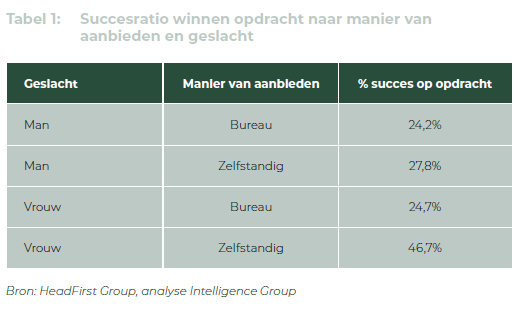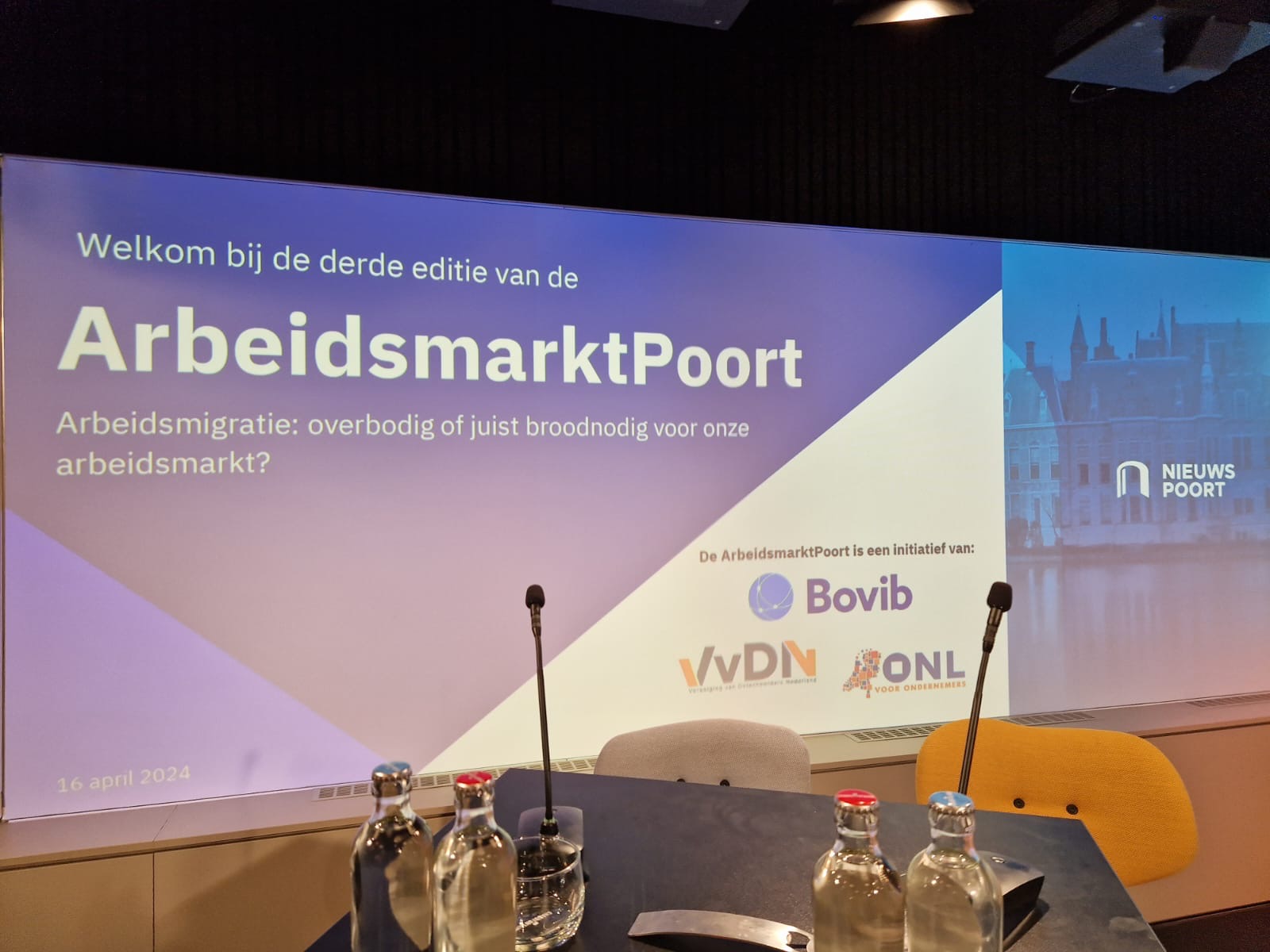Postponing WTTA to 2027: reflection needed
Outgoing Minister Van Gennip announced this week that the introduction of the Law on the Admission of Workforces to the Netherlands (WTTA) will be postponed until Jan. 1, 2027. This is due to the need for service Justis to take more time for the implementation test, as a result of which the previously proposed time frame did not prove feasible.
Criticism of bill
The original purpose of the WTTA remains unchanged: to combat rogue broadcasters and improve the position of migrant workers. We support the decision to delay implementation by one year, given the complexity of the admission system and its significant impact on the labor market. Thorough reflection and careful consideration of feasibility are crucial.
We remain critical of the broad scope of the system. In large parts of the (flexible) labor market, such as secondment, consultancy, interim management and the intermediary services for higher-educated professionals, there are no accommodation problems, underpayment or malafidity.

Scope raises questions
This broad scope raises questions as to the extent to which the principles of proportionality and subsidiarity have been observed. Bona fide companies, which in principle have nothing to do with the problems mentioned in the Roemer Commission report (the reason for the WTTA), face significant administrative burdens and additional regulatory burdens. Annually they may be burdened with at least €143 million in additional regulatory burden.
Improving enforcement
We support the call by the Advisory Committee on Regulatory Burden Assessment (ATR) for a thorough review of enforcement capacity at the Labor Inspectorate. Effective enforcement is essential to ensure the effectiveness of such a regime. An alternative suggestion is the use of a register of companies working with migrant workers. This is more manageable, reduces the regulatory burden on uninvolved companies, and enables the Labor Inspectorate to enforce effectively and in a targeted manner. It is simpler, easier to implement and helps protect and improve the position of migrant workers.
Laws and regulations are constantly changing. Find out how this affects your external hiring. Our experts are ready for you - leave your details and we'll get back to you.

Success of female self-employed surpasses men in labor market
The latest Talent Monitor, a joint study by labor market data specialist Intelligence Group and HR-tech service provider HeadFirst Group, shows that female professionals - self-employed or employed by suppliers - are 68 percent more successful in obtaining assignments than their male counterparts. Moreover, the data analysis shows that female self-employed professionals no longer have a gender pay gap in hourly rates, whereas this was still the case before the corona pandemic.
Missed opportunity for recruiters
Despite the success of female professionals in winning assignments, they are less actively approached by recruiters than men. The analysis shows that, on average, men are approached one-third more often than women. Among independent professionals, this is just under 19 times per year among men versus nearly 15 times per year among women. Among employed workers, this happens more than 10 times a year versus nearly seven times a year.
Geert-Jan Waasdorp, director and founder of Intelligence Group, says: "Men are more likely to work full-time and are therefore attractive to recruiters. This could be financially driven, as more hours also means more turnover for a recruitment agency. In addition, a possible factor is that LinkedIn, one of the main sourcing channels, is slightly over-represented by men."
Marion van Happen, CEO of HeadFirst Group, adds: "This surprising insight highlights the importance of measuring effective recruitment efforts. Gut feeling no longer represents market dynamics. Organizations that get their numbers, both internal and external, right are demonstrably more successful in placement, growth and profitability."
Gender equality in hourly rates
Where exactly there is no difference between male and female professionals is in the hourly rate. The rates have converged significantly over the past six years. Up to and including the first quarter of 2020, this difference was 10.3 percent, but after this corona period, the difference has become minimal and moreover not explanatory on the basis of gender. This is in contrast to other segments of the market or contract types where this is still the case. Of course, factors such as work experience, field and education level still play a role in explaining differences in rates.
"This groundbreaking result from our data analysis points to a promising development: there is no longer a gender pay gap between male and female professionals. This represents a crucial step toward a just and equal labor market for all. It is an inspiring goal to which we, together with our rapidly growing ecosystem, are striving," Van Happen concludes.
The Talent Monitor provides valuable insights into labor market movements and gender dynamics in the job market. The full report is available for free download at headfirst.group.
Talent Monitor | Labor market movements: the men versus the women
Labor market movements: the men versus the women
It is no surprise that there is (unconscious) bias among recruiters, clients or employers when it comes to attracting male and female workers. At least a few times a year, newspapers headline the huge salary gap between the two genders. However, as far as professionals are concerned, the difference in hourly rates has become very small and, more importantly, no longer statistically explainable by gender. Other factors, such as work experience and education level, now explain the difference. These and several surprising insights are presented in this Talent Monitor.
Success of female self-employed surpasses men in labor market
The latest Talent Monitor, a joint study by labor market data specialist Intelligence Group and HR-tech service provider HeadFirst Group, shows that female professionals - self-employed or employed by suppliers - are 68 percent more successful in obtaining assignments than their male counterparts. Moreover, the data analysis shows that female self-employed professionals no longer have a gender pay gap in hourly rates, whereas this was still the case before the corona pandemic.

Key findings
- Female professionals are not paid significantly less or more per hour for the same work compared to male professionals. What is striking is that women, not significantly but structurally, get or accept a lower rate than men for the same work. The average difference is 1 to 2 euros per hour.
- Factors such as work experience, area of expertise and level of education do determine different hourly rates, as does the extent to which being an independent professional is the main daily occupation. In other words, independent professionals who combine their work with other activities such as volunteering, being a househusband or housewife tend to receive lower hourly rates.
- Women are more successful than men in obtaining assignments. Female independent professionals without an agency are 68% more successful in scoring an assignment than male independent professionals without an agency.
- Independent professionals without an agency are more successful in scoring an assignment than if offered through an agency.
- Male professionals are much more active in the job market than women and are approached remarkably more than women.
Partner

Download Talent Monitor
By downloading the Talent Monitor, you agree that your data will be shared with co-initiator Intelligence Group.
Other reports...
Nothing found.
New bill introduces admissions system: what does it mean?
A new bill, the Law on the Admission of the Supply of Workers (WTTA), will begin to be debated in the House of Representatives this year. This proposal brings with it an admission system for temporary employment agencies and other companies that make workers available to a third party to work under its management and supervision. The scope of the law is thus considerably broader than just the temporary employment sector. What exactly does it entail and what impact will it have on suppliers and clients?
The new regime requires that lenders be allowed to operate in the market only if they are authorized to do so under a new regime. To be admitted, they must meet several conditions:
- The company meets the standards framework by means of an approved inspection report provided by an inspection body designated by the Minister (article 12q Waadi);
- A Certificate of Good Conduct for legal entities is provided (Article 12o Waadi);
- The company deposits a deposit of €100,000 (Article 12p Waadi).
Hirers using temporary employment, secondment or payroll agencies, the so-called lenders, may only do business with agencies that have been admitted to the system by the Minister of Social Affairs and Employment. The Dutch Labor Inspectorate will supervise whether in- and on-borrowers actually work with authorized lenders and whether the lenders are authorized. Failure to comply with applicable laws and regulations can result in hefty fines, both for hirers, and hirers.
Transitional regime
The bill also provides for transitional law to encourage hirers - in the run-up to the entry into force of the obligation of admission on January 1, 2026 - to apply for admission no later than June 30, 2025, who already possess an SNA seal of approval. Companies that already have this seal of approval will be admitted on the basis of the SNA seal of approval, even if they have not yet been actually inspected on the basis of the new standards framework.
Implications for in- and out-workers
For suppliers who engage in the provision of labor, this bill represents a significant change in the way they operate. To remain active in the market, they will have to be admitted to this public system. Lenders will be audited periodically (probably twice a year) on the standards framework. This therefore requires compliance with laws and regulations, as well as the necessary investment in time and resources to meet all requirements. In- and on-lenders will be prohibited from doing business with lenders who are not admitted to the system. There will be a public register to verify that the hirer is actually admitted to the system.
In essence, the WTTA will change the dynamics of the Dutch labor market, with the goal of improving the position of migrant workers, keeping rogue broadcasters out of the labor market, and thus ensuring a level playing field for all buyers and sellers. It is important for both suppliers and clients to be well informed about developments regarding the WTTA. Needless to say, we at HeadFirst Group are preparing in a timely and adequate manner so that we can continue to provide our services.
Successful third edition of the Labor Market Gateway
On Tuesday, April 16, the third edition of the ArbeidsmarktPoort took place in Nieuwspoort, organized by the Bovib, the VvDN and ONL voor Ondernemers. This meeting brought together various speakers to discuss current labor market issues with each other and the audience. The central theme of this edition was labor migration, a topic that is high on the political agenda and on which opinions vary widely. It was therefore relevant to exchange ideas and discuss positions with stakeholders.
Former ChristenUnie party leader Gert-Jan Segers provided the opening remarks and explained the Delta Plan Grip op Arbeidsmigratie. Gert-Jan recently started as strategic advisor at OTTO Work Force and contributes to the public-societal debate on labor migration and the consequences for the Dutch labor market and society with such reports. The opening remarks and questions from the audience were followed by a discussion panel. Tjebbe van Oostenbruggen (Member of Parliament NSC) and Titus Kramer (entrepreneur and former honorary consul for Turkey) entered into a discussion with each other and the audience, led by Hans Biesheuvel (former chairman of ONL). The discussion generated interesting questions from the audience, especially about the NSC's position on labor migration, with the party making demands on terms and conditions of employment, conditions and housing for migrant workers. NSC also advocates an admission system to keep out rogue employment agencies, which in turn led to critical questions about the feasibility and enforcement of the proposed legislation.
In October, the fourth edition of the Labor Market Gate is planned, where interesting speakers are again expected. HeadFirst Group supports this initiative and is in favor of a constructive, factual debate on issues and challenges in the Dutch labor market. We remain committed to these meetings and look forward to the next edition.
Do you have questions about the Labor Market Gateway and our position in the labor market file? Please contact Sem Overduin, Manager Corporate Affairs & Public Policy at HeadFirst Group, at Sem.Overduin@headfirst.nl.


An honest and transparent view of the labor market: in conversation with Joachim Klein Molekamp of Loyal Interim
Loyal Interim is a staffing company that values honesty and transparency. Chief Business Development and shareholder Joachim Klein Molekamp sheds light on the needs of the new generation of professionals, in an ever-changing labor market. He also explains how partnerships, such as the one with HeadFirst Group, contribute to their growth and success.
Flexibility and agility are crucial, both for organizations and professionals. As a result, the need for external workers is increasing, while new laws and regulations do not make hiring self-employed workers particularly attractive. This places secondment companies under pressure. "Professionals receive multiple offers and are more likely to change jobs. In addition, projects take longer, while the length of tenure decreases. This creates a special market force. As a service provider, it is then extra important to position the organization well in the labor market. Fortunately, we see opportunities for Loyal Interim because our model suits a new generation of professionals who want freedom, variety and fair remuneration. We see this in the many professionals who have been with us for more than 6 years. That is quite unique for secondment," says Klein Molekamp.
Happy people stay loyal longer
Loyal Interim aims to grow to 1,000 Loyals (professionals) rating them with a 9+ by 2030. Klein Molekamp says, "To achieve that, you have to understand the importance of being a good employer. Our transparent business model, in which we are open about salaries, among other things, emphasizes honesty and equality. Our loyals have responsibility for their own results and can set their own course and terms of employment. In addition, we look in particular at personality, skills and ambitions during recruitment. As a result, the ratio of men to women is proportional and people of more than 15 different nationalities work for us."
"At Loyal Interim, people are the focus, both in the approach to loyals and in collaborations with other parties."
And those different nationalities are respected. For example, Klein Molekamp shares an example of an event during Ramadan, where they adjusted the program and dined together after sunset. "In the end, we are one Loyal together. Freedom, flexibility and autonomy are key, and this fits perfectly with the needs of the new generation of professionals. We call that the comfort of being a good employer, with benefits of entrepreneurship."
Successful partnership
Currently, over 200 of these happy loyals are working on an assignment at 25 different clients from HeadFirst Group's vast network. In fact, Loyal Interim and HeadFirst Group work together at a variety of clients. "We share knowledge and developments to better serve the clients. In this we notice that there is proactive thinking and fast switching. We see HeadFirst Group as a strategic partner and a crucial part of Loyal Interim's success," Klein Molekamp concludes.
HeadFirst Group and Impellam Group join forces to become a global leader in STEM, digital and IT talent, managed services and HR tech
HeadFirst Group and Impellam Group announced today that they have joined forces. Together they form one of the world's leading Managed Service Providers with specialism in STEM talent and a distinctive HR-tech platform for professionals. The group accounts for revenue (managed spend, by 2023) of 8 billion euros, has 2,100 expert colleagues and more than 75 thousand professionals working for clients around the world.
This strategic step provides customers with a unique, truly global tech and talent solution to ensure they stay at the forefront of their industry. The deal has created an unparalleled force in digital, IT, data, life sciences, clinical and engineering talent and leaves the expanded group well-placed to drive market beating growth and to deliver increased value for colleagues, customers, professionals, suppliers, and shareholders.
Han Kolff, chairman of the Board, commented: "We are proud to have brought industry leaders HeadFirst and Impellam together. As well as vast geographic reach, our expanded group combines world-class expertise and market-leading tech, providing customers with mission critical talent, hereby creating a unique platform for growth in a growing market. I am confident HeadFirst and Impellam will power the next world of work together.”
Julia Robertson, CEO of Impellam and the enlarged group, said: “We have an exciting future ahead of us. In a world where talent and tech must come together to build better businesses, we will collaborate to leverage the combined strength and capability of our market-leading brands, our people, and our distinctive technology. Our complementary cultures and our focus on our customers’ needs will ensure we deliver market leading, digitally enabled and differentiated solutions to our customers across the world.”
Experienced team driving growth agenda
Leading the future success and growth of the combined business, the Board of the new group includes: Han Kolff, non-executive chairman, Julia Robertson, group CEO, Tim Briant, group CFO, Marion van Happen, CEO of HeadFirst Group, as well as non-executive directors and co-founders Koen Bekkering and Boyd Sleeman.
There will be no immediate changes to the day-to-day operations of Impellam Group and HeadFirst Group. Impellam and HeadFirst will continue to deliver industry-leading solutions to customers, suppliers and professionals.
Following the completion of the transaction, Lord Ashcroft, the former majority shareholder of Impellam Group will serve as non-executive director on the board.
Hourly rates for self-employed and seconded workers lag behind collective bargaining wages
Expected rate increase of one to two percent in 2024
The hourly rates of flexible workers, self-employed workers and professionals employed by secondment agencies, rose an average of 4.3 percent in 2023 compared to 2022. This increase lags slightly behind the trend in collective bargaining wages. An average rate increase of one to two percent is expected for 2024. This emerges from the latest Talent Monitor of labor market data specialist Intelligence Group and HR-tech service provider HeadFirst Group.
Over 2023, the average agreed wage increase for permanent staff was six percent, according to figures from CBS. HeadFirst Group's hiring data show that professionals who started a new assignment in 2023 experienced a lower increase, at 4.3 percent. The average hourly rate of highly skilled self-employed and seconded workers currently stands at €95.80.
The hourly rates of flexible workers have risen continuously in recent years, over 2022 and 2023 even by more than four percent. Due to the faltering economy, the increasing supply of self-employed and seconded workers in the labor market and falling inflation, this is highly unlikely to continue in 2024. Geert-Jan Waasdorp, director and founder of Intelligence Group, says: "Our forecasting model showed a rate drop of four to six percent based on all these factors, but we do not consider that realistic. The exceptional inflation situation over the past 2 years, has thrown the robust forecasting model off track. We consider a slight increase of 1 to 2 percent as the most likely scenario. "
Scarcity remains, despite slight growth in economy
Waasdorp notes that several developments point to a possible easing of labor market scarcity, but that has little effect on actual scarcity. "We have experienced nine months of economic contraction, but just in the fourth quarter of 2023 there was a small upturn (+0.3 percent). We have seen a decline in job openings for quarters, yet demand remains extremely high and the unemployment rate low. At the same time, bankruptcies and reorganizations are increasing. This is bringing more personnel into the labor market, although it is only a drop in the bucket. Both the increasing supply of talent and the degree of movement in the labor market is still very small in historical perspective and absolute terms."
In addition, a decrease in scarcity is not reflected in the sourcing pressure among freelancers. In fact, the frequency in which they are approached for an assignment shows an upward trend. On average, self-employed people are approached eighteen times a year. In comparison, employed people are approached about nine times a year on average. Marion van Happen, CEO of HeadFirst Group, emphasizes, "These figures show the continuing demand for flexible labor and the growing interest in being self-employed within the labor market. It is undeniable that highly skilled professionals make an invaluable contribution to the Netherlands, with a social and economic value of approximately 4.4 billion euros per year. This also highlights the importance for self-employed professionals to present their profile and skills well, and for organizations to develop effective strategies to attract and retain permanent and flexible talent in a competitive labor market."
More insights into professionals' rate trends over 2023 and into 2024? Download the latest Talent Monitor for free at headfirst.group.
Talent Monitor: Rate development professionals 2024
Rate development professionals 2024
We are balancing between economic contraction and growth. After nine months of decline, we saw a modest rebound in our economy in the fourth quarter of 2023. Despite once again challenging market conditions such as inflation and "higher" market interest rates, we ventured another forecast for 2024 with this Talent Monitor. You can read about it in this report.
Hourly rates for self-employed and seconded workers lag behind collective bargaining wages
The hourly rates of flexible workers, self-employed workers and professionals employed by secondment agencies, rose an average of 4.3 percent in 2023 compared to 2022. This increase lags slightly behind the trend in collective bargaining wages. An average rate increase of one to two percent is expected for 2024. This is according to the latest Talent Monitor from labor market data specialist Intelligence Group and HR-tech service provider HeadFirst Group.

Key findings
- After three quarters of contraction in the Dutch economy, the fourth quarter of 2023 shows a slight increase of 0.3% compared to the third quarter. Compared to 2022, however, there is still a decline of 0.5%.
- Several signs indicate that there is some relief in the scarcity in the labor market. Demand for personnel is decreasing slightly and supply appears to be increasing slightly.
- Compared to a year ago, labor market activity among self-employed professionals - the extent to which they move from assignment to assignment - shows a slight increase from 20.1 to 21.7% in the fourth quarter of 2023, compared to the same quarter in 2022. There was also some growth in the group of latent professionals, who, while not actively seeking new assignments, are open to other options. At the same time, the number not moving at all decreased.
- There has been a sharp increase in the average number of offers per job. By the end of 2023, this number was almost at the same level as during the peak in the second quarter of 2020.
- The number of self-employed people who want to be employed (back) has increased slightly. At 11.6%, it is still far behind the percentage in 2021, when it was 17.0%. In addition, just 13.0% of employees indicate that they would like to work as a self-employed person (again).
- Sourcing pressure continues to grow unchanged: on average, self-employed individuals are approached about 18 times a year for a job. More than six in 10 are approached at least once a quarter.
- Data from HeadFirst Group shows that the rates of flexible workers - self-employed and professionals employed by secondment firms - who started a new assignment in 2023 rose an average of 4.3% compared to 2022.
Partner

Download Talent Monitor
By downloading the Talent Monitor, you agree that your data will be shared with co-initiator Intelligence Group.
Other reports...
Nothing found.
HeadFirst Group responds to the internet consultation on the Law on Admission for the Posting of Workers
HeadFirst Group responds to the internet consultation on the Law on Admission for the Posting of Workers
From Wednesday, January 24 through Saturday, February 24, it was possible to respond to the Internet consultation on the amendment of the Decree on allocation of labor forces by intermediaries. This in connection with the plans to introduce an admission system. A total of sixteen public responses were submitted.
As a market-leading organization, we believe it is important to contribute to the political-social debate on the future of the (flexible) labor market. For this reason, we also responded to the internet consultation. Below is a brief summary of our response point by point:
- HeadFirst Group is concerned about the broad scope of the admission system. We embrace the recommendations of the Roemer Commission to improve the position of migrant workers, but as an HR service provider at the top of the market, we have nothing to do with this issue. We therefore call for more customization;
- Much important information in the Explanatory Memorandum is currently missing. The draft decision does not yet contain a framework of standards and information is also missing with regard to the waiver scheme. In order to make a well-considered and complete judgment on this change, it is important that we as an organization have all relevant figures and obligations;
- HeadFirst Group supports the advice of the Advisory Panel on Regulatory Burden (ATR) to investigate less burdensome alternatives and first firmly enforce the laws and obligations in force. By following this advice, companies will be prevented from being saddled with at least 143 million euros of additional regulatory burden every year;
- The broad scope means that thousands of companies will soon have to be admitted to the system. This requires good representation from industry associations and umbrella organizations so that all interests and concerns are heard in a timely and regular manner.
Curious about our full input? Check out our response here.










